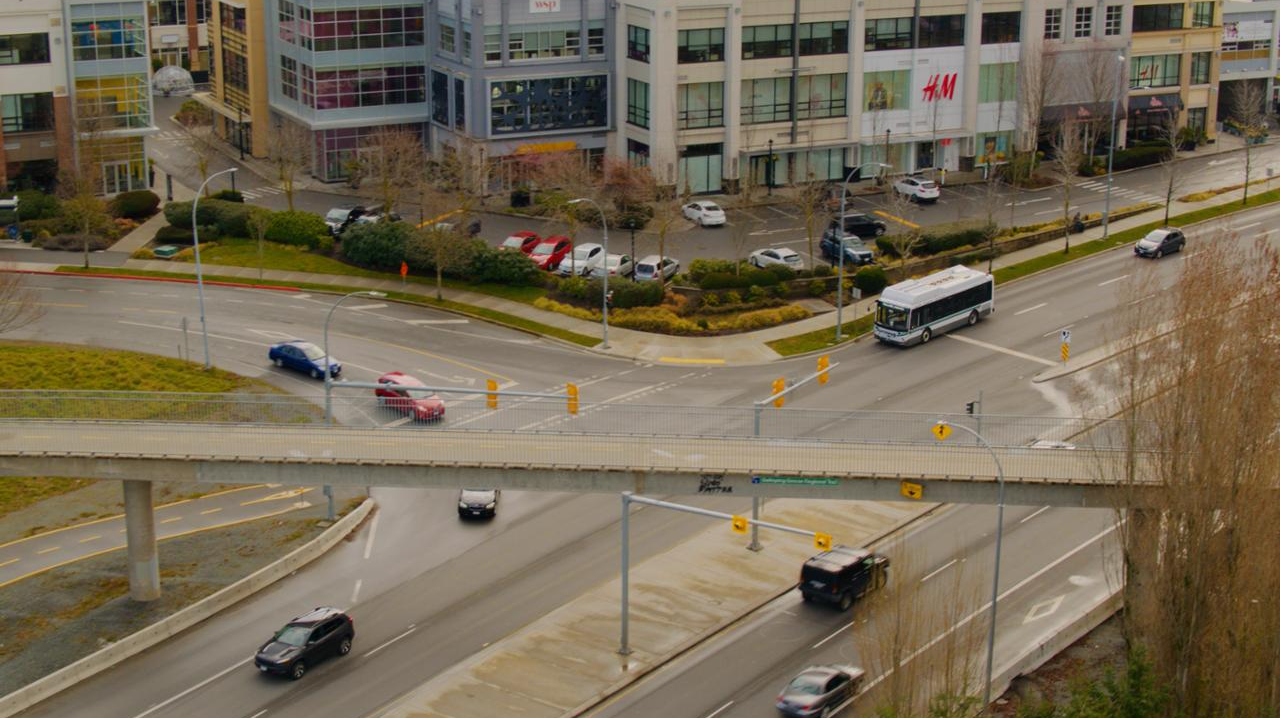
o specifies where resulting trips are storedĪfter creating the trips.xml we need to convert the trips to routes.e specifies the end time which is set to 600s (the default is 3600).n is used to specify the network in this case.This command will generate 600 trips (numbered 0-599). Execute the following command: randomTrips.py -n -e 600 -o

This generates random trips for a given network and the results are outputted in the specified trips.xml. SUMO offers the python tool called randomTrips.py. In order to create a routes file, a trips file needs to be generated. In order to create a SUMO simulation, we need to create at a minimum a routes file.
Bus route file sumo how to#
Now that we have created a network using SUMO let’s learn how to create a SUMO simulation. The network should look like the image shown earlier. In order to check the network generated, open the SUMO Gui and open the file that was generated.
output-file is the resulting network file. grid.y-number is the distance between each junction in the y-direction in our image above we had 1000m (2*1000m = 1000m). grid.x-length is the distance between each junction in the x-direction in our image above we had 500m (5*500m = 2500m). grid.y-number is the number of junctions in the y-direction in our image above we had 3. grid.x-number is the number of junctions in the x-direction in our image above we had 6. netgenerate -grid -grid.x-number=6 -grid.y-number=3 -grid.y-length=1000 The following command will create a network named equivalent to what we created by hand above. In this case, we will create a grid-network. NETGENERATE allows you to build three types of abstract networks: grid-networks, spider-networks, and random networks. Creating a SUMO network using NETGENERATE The result will be a file name in the directory this command was executed in. In your command line run (note this is assuming the node files is name and the edge file is named and they are in the same directory): netconvert -node-files= -edge-files= The following is the edge file for the above image: Īfter creating the node and edge file you can now run NETCONVERT. If the name of one of the nodes can not be referenced (because they have not been defined within the nodes file) an error will be generated when NETCONVERT runs. Within the edges file, each description of a single edge looks like this: " from="" to=""Īs mentioned earlier, each edge is unidirectional and starts at the from node and ends at the to node. Edge files describe roads/streets and have the extension “.edg.xml”. The following is the node file for the above image: If you leave out the type of the node, it is automatically guessed by NETCONVERT. The square brackets indicate that the parameter is optional.Įach of these attributes has a certain meaning and value range. Node files normally having the extension “.nod.xml” and every node is described in a single line which looks like this: " x="" y="" /> The node file describes the junctions in SUMO. In order to create the network by hand, we must first created a node file. Simple SUMO Network Creating a SUMO Network By Hand This can create be done by either creating the network by hand or using NETGENERATE, both ways are detailed below. We are going to create the following simple SUMO network. 
.png)

These can be enhanced by user input formats and set processing options, to include districts and roundabout descriptions. Connections between lanes at junctions (nodes).Junctions including their right of way regulation,.Traffic light logistics referenced by junctions.Every street (edge) as a collection of lanes.The SUMO network contains the following information: The edges represent roads or streets and are unidirectional. The nodes/vertices represent intersections and are called “junctions” in SUMO. Like a directed graph, the SUMO network consists of nodes/vertices and edges. A SUMO network is basically a directed graph. The SUMO network file also defines the roads and intersections that simulated vehicles run along or across. In SUMO, a SUMO network file defines the traffic-related part of a map. In this post, you will learn about SUMO networks, how to create a SUMO network (by hand and using NETGENERATE), and how to create a simulation in SUMO.Īs always, if you prefer to watch a video you can see the walkthrough of this tutorial on my YouTube channel here.




.png)



 0 kommentar(er)
0 kommentar(er)
